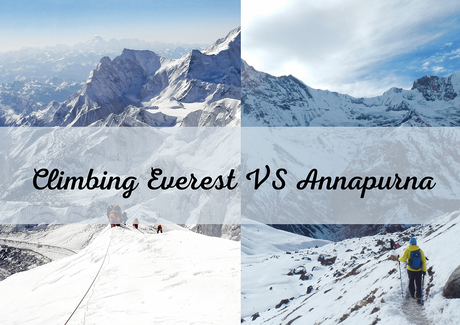
You’re thinking about climbing a Himalayan peak. But which one? There are many high-altitude mountains in the world, and Nepal has more than eight peaks above 8000 meters. Will you take Annapurna or Everest if you need to submit one? Climbing Everest or Annapurna is undoubtedly a challenging task
The journey leading to the top is even more impressive. Climbers must first trek through the Himalayas, which can take weeks or even months. The terrain is rough, and the air is thin, making it a difficult journey for anyone, let alone someone who isn’t acclimated to the high altitude.
Both peaks are 8,000 meters high but differ in difficulty and other factors. Let’s take a look at the two mountains and see which one is a better fit for you.
Overview of Everest and Annapurna Mountains
There are a lot of mountains in the world, but only a select few have been deemed “the tallest.” Everest and Annapurna are two of those mountains.
Comparing Everest and Annapurna, Everest is the taller of the two, but Annapurna is thought to be harder to climb.
Differences in the Routes to the Top
There are two main routes to the top of Everest: the North Ridge and the South Col. The North Ridge is the more traditional route and is considered more complex. The South Col route is newer and supposed to be less complicated but more dangerous because of the Khumbu Icefall.
Annapurna has three main routes: the Northwest Ridge, the Southwest Ridge, and the Southeast Ridge. All three courses are considered to be complicated.
What Are the Difficulties of Each Climb?
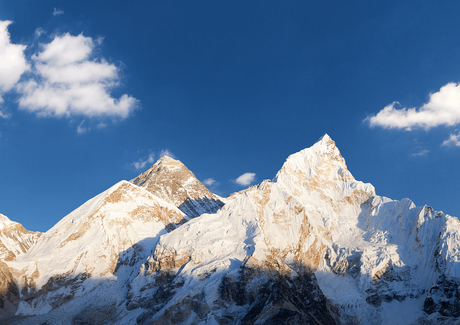
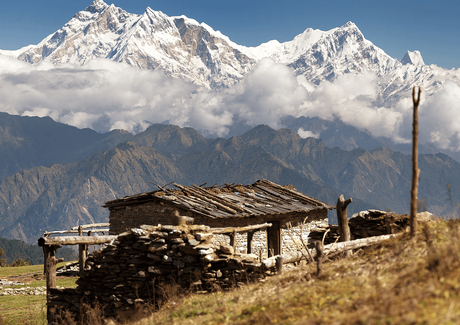
When it comes to climbing Everest and Annapurna, a few key differences set each mountain apart. Everest is much taller than Annapurna—it’s the tallest mountain in the world, at 29,029 feet. Because of its height and the extreme conditions that come with climbing it, Everest is considered to be one of the most challenging mountains to summit.
In contrast, Annapurna is much shorter at 26,545 feet, but it’s also considered the most dangerous mountain to climb. This is because a higher percentage of climbers died while attempting to summit Annapurna than on any other peak. So while Everest may be taller and more complex, Annapurna is more deadly.
Understanding the Risks of Each Peak
As you can imagine, climbing any mountain comes with risks. But when you’re dealing with two behemoths like Everest and Annapurna, those risks are amplified. Look at some of the dangers you might face on each peak.
- Everest: avalanches, crevasses, freezing temperatures, high winds, lack of oxygen
- Annapurna: avalanches, rockfalls, falling ice, glaciers, crevasses
As you can see, both mountains come with their fair share of dangers. But when you compare the two, it’s clear that Everest is the more dangerous. Not only is it higher (which means colder temperatures and less oxygen), but it also has more potential hazards like avalanches and crevasses.
Also read:
- Annapurna circuit vs Annapurna Base Camp
- Annapurna circuit vs three passes vs Everest base camp
- Annapurna vs K2
Mental Challenges of Climbing Annapurna
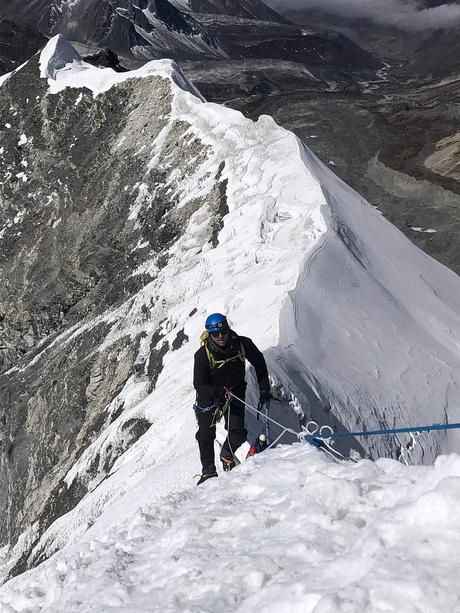
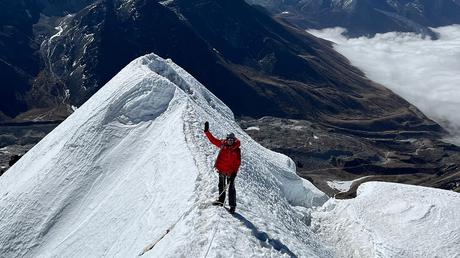
You’re about to attempt one of the world’s most physically and mentally demanding feats. Are you up for it?
Climbing Mt. Annapurna is no easy task. It requires immense physical strength, stamina, and willpower. But it’s also essential to be mentally prepared for the challenge.
The mental challenges of climbing Annapurna are just as daunting as the physical ones. You’ll face extreme weather conditions, dangerous terrain, and deadly obstacles. You’ll need to be strong enough to stay focused and motivated when things get tough.
If you’re not prepared for the mental challenges, you may likely turn back before reaching the summit. So make sure you’re ready for anything before attempting this climb.
Physical Demands of Climbing Everest
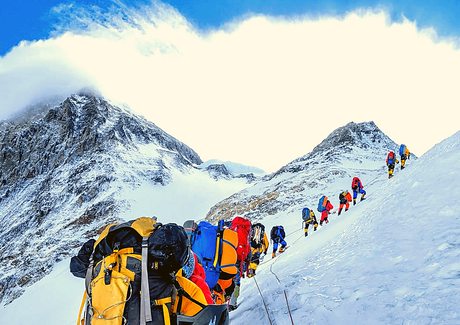
When you’re climbing Mt. Everest, there are a lot of physical demands. You have to be able to carry a lot of weight, traverse rugged terrain, and be in excellent physical condition.
Carrying a lot of weight is crucial. You have to be able to take all of your supplies with you, so you’re open to what you can bring. This means that you have to be able to carry food, water, camping equipment, and other supplies.
Traversing rugged terrain is also essential. The trail up Mt. Everest is treacherous, and you have many obstacles to navigate. If you can’t traverse rough terrain, you’ll have difficulty reaching the top.
Finally, it would be best if you were in excellent physical condition. The climb up Mt. Everest is strenuous and requires a lot of stamina. You will only make it very far if you’re in good shape.
Comparing Altitude And Elevation
So, what’s the difference between Everest and Annapurna? Well, for starters, Everest is about twice as high as Annapurna. To be precise, Everest sits at 29,029 feet, while Annapurna maxes out at 26,545 feet.
And that’s not all. The weather conditions on Everest are also notoriously harsh. You’re dealing with sub-zero temperatures and high winds. On Annapurna, meanwhile, you’re more likely to encounter something called the “Annapurna Effect” when climbers experience irrational levels of optimism.
So which one is harder? It depends on what you’re looking for. Everest is the way to go if you’re looking for a challenge. Similarly, Annapurna I is considered much tougher than Everest – if you see the record of ascending to Annapurna, 29 out of 100 die. 72 people have died out of 244 expeditions since 1990, which is comparatively higher than Mount K2 of Pakistan.
Weather Conditions on Everest And Annapurna
The temperatures vary significantly on Everest and Annapurna, often reaching extremes. In May, the temperatures on Everest can range from -20 degrees Fahrenheit to 60 degrees Fahrenheit. Annapurna is not as extreme, but temperatures can reach up to -5 degrees Fahrenheit in January.
The wind speeds are also very high on both mountains. The winds on Everest can reach up to 175 mph, and the winds on Annapurna can reach up to 150 mph.
Both weather conditions pose a significant challenge to climbers attempting to reach the summit. The cold can cause climbers to become very tired, and the wind can knock them off balance.
How to Cope With Altitude Sickness?
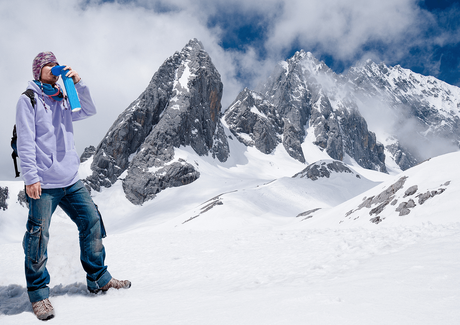
If you feel the effects of altitude sickness, it will be better to return to a lower altitude as soon as possible. You might also be prescribed medication to help with the symptoms.
Acetazolamide is a medication that can help prevent altitude sickness, and it’s something that I always make sure to bring with me when I’m climbing. It works by increasing the urine level your body produces, which helps to expel excess fluid from your body and reduce congestion.
Dexamethasone is another medication that can be used to treat the symptoms of altitude sickness. It’s a steroid that works by reducing inflammation and can be taken orally or injected.
You should be evacuated from the mountain if things get worse.
Overcoming Barriers on the Everest or Annapurna
The thing about mountains is that they’re constantly changing—ice can form overnight, rocks can fall during the day, and the weather can turn on a dime. All of which can make the route up Everest and Annapurna pretty treacherous.
To overcome these obstacles, climbers must think on their feet and be quick problem-solvers. For example, if a section of the route is icy, climbers need to find a way around it without losing footing. And if a rock falls, they need to determine the best way to proceed.
Climbers also need to have a lot of stamina and endurance. After all, they deal with high altitudes, extreme cold, and often little oxygen. Not to mention, they’re carrying all of their gear with them as they climb. So climbers must be in top physical shape before attempting to summit Everest and Annapurna.
Here are a few tips and tricks that might come in handy if you’re planning on taking on both Everest and Annapurna:
- Make sure you have the proper equipment. This includes everything from your clothing, camping gear, and climbing harness.
- Train, train, train. You must be in peak physical condition before attempting either of these mountains. Consider hiring a personal trainer or joining a mountaineering club to get started.
- Remember to consider the importance of acclimatization. When you’re finally on the mountain, take things slowly to allow your body to adjust to the altitude.
- Be prepared for anything. Both peaks can be unpredictable, so it’s essential to have a backup plan (or two).
Conclusion
Climbing Everest and Annapurna is no small feat, but with proper preparation, anything is possible.
So, what’s the bottom line? Both Everest and Annapurna are challenging. But because of the rough terrain, weather, and the lack of technical and local support, and with a fatality rate of 29% Annapurna is way too arduous, dangerous, and harder to climb than Mount Everest.
So if you’re considering climbing Everest or Annapurna, now you know a little about what you’re getting yourself into. It’s a challenging task by any means, but with the proper training, preparation and climbing on the proper season, it’s possible. Make sure to consult with a professional to create a training program that will best prepare you for the challenges you’ll face on the mountain.
